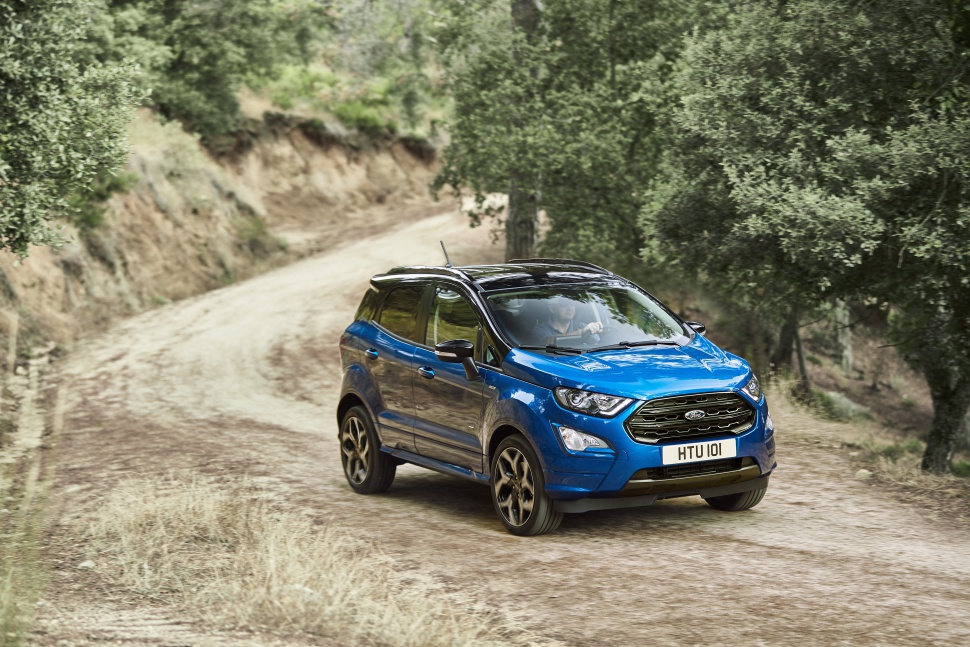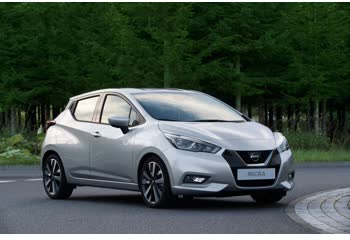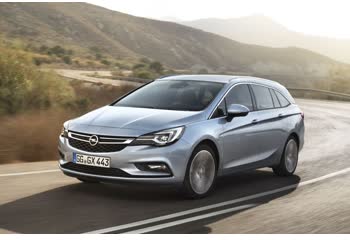Everything you need to know about specifications and performance - Ford EcoSport 2018 - 1.0 EcoBoost (100 Hp)

Overview:
What is the engine capacity of a Ford EcoSport 2018?
The engine capacity of the Ford EcoSport 2018 is 999.
Ford EcoSport 2018 How many horsepower?
The engine power of the Ford EcoSport 2018 is 100 Hp @ 4500 rpm..
What is the Ford EcoSport 2018 engine?
Ford EcoSport 2018 engine is SFJL. (Click to see other cars using the same engine)
How much gasoline does a Ford EcoSport 2018 consume?
The Ford EcoSport 2018 consumes 5.1-5.3 liters of gasoline per 100 km
General:
Brand: Ford
Model: EcoSport
Generation: II (facelift 2017)
Modification (Engine): 1.0 EcoBoost (100 Hp)
Start of production: 2018
End of production: December, 2021
Powertrain Architecture: Internal Combustion Engine
Body type:Sports Utility Vehicle (SUV)
Seats: 5
Doors: 5
Engine:
Engine systems: Start & Stop System
Power: 100 hp @ 4500 rpm.
Power per litre: 100.1 hp/l
Torque: 170 nm @ 1500-5000 rpm.
Engine Model/Code:SFJL
Engine displacement: 999
Number of cylinders: 3
Engine configuration: Inline
Number of valves per cylinder: 4
Fuel injection system: Direct injection
Engine aspiration: Turbocharger, Intercooler
Valvetrain: DOHC
Engine oil capacity: 4.6 l
Coolant: 5.6 l
Engine layout: Front, Transverse
Cylinder Bore: 71.9 mm
Piston Stroke: 82 mm
Performance:
Fuel Type: Petrol (Gasoline)
Fuel consumption (economy) - urban: 6-6.1 l/100 km
Fuel consumption (economy) - extra urban: 4.6-4.8 l/100 km
Combined fuel consumption (WLTP): 5.9 l/100 km
Fuel consumption (economy) - combined (NEDC): 5.1-5.3 l/100 km
Fuel consumption (economy) - urban (NEDC): 6-6.1 l/100 km
Fuel consumption (economy) - extra urban (NEDC): 4.6-4.8 l/100 km
Fuel consumption (economy) - combined: 5.1-5.3 l/100 km
Emission standard: Euro 6d-TEMP-EVAP-ISC
Acceleration 0 - 100 km/h: 11.9 sec
Acceleration 0 - 62 mph: 11.9 sec
Maximum speed: 170 km/h
Weight-to-power ratio: 12.7 kg/Hp, 78.5 Hp/tonne
Weight-to-torque ratio: 7.5 kg/Nm, 133.4 Nm/tonne
Acceleration 0 - 60 mph: 11.3 sec
Space:
Kerb Weight (kg): 1274
Max. weight (kg): 1730
Max. roof load: 40 kg
Max load (kg): 456
Trunk (boot) space - maximum: 1145 l
Trunk (boot) space - minimum: 320 l
Permitted trailer load with brakes (12%): 900 kg
Fuel tank capacity: 52 l
Permitted trailer load without brakes: 670 kg
Permitted towbar download: 75 kg
dimensions:
Ramp-over (brakeover) angle: 23.3°
Wading depth: 550 mm
Length: 4096 mm
Width: 1765 mm
Height: 1653 mm
wheelbase: 2519 mm
Width with mirrors folded: 1816 mm
Width including mirrors: 2057 mm
Front track: 1530 mm
Rear (Back) track: 1522 mm
Ride height (ground clearance): 190 mm
Minimum turning circle (turning diameter): 10.6 m
Approach angle: 21°
Departure angle: 33.3°
Powertrain, Suspension and Brakes:
Drivetrain Architecture: The Internal combustion Engine (ICE) drives the front wheels of the vehicle.
Drive wheel: Front wheel drive
Number of gears and type of gearbox: 6 gears, manual transmission
Front brakes: Ventilated discs, 300x25 mm
Rear brakes: Drum, 228.6 mm
Assisting systems: ABS (Anti-lock braking system)
Steering type: Steering rack and pinion
Power steering: Electric Steering
Tires size: 205/60 R 16
Wheel rims size: 6.5 J x 16
Front suspension: Independent type McPherson
Rear suspension: Coil spring, Elastic beam
See also

Other generation.
Its production began in 2003 until 2006

Same production year and almost the same engine capacity.
Its production began in 2018 until Now

Same production year and almost the same engine capacity.
Its production began in 2018 until 2019

Write a comment